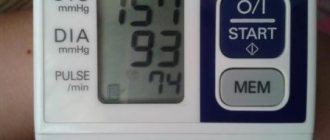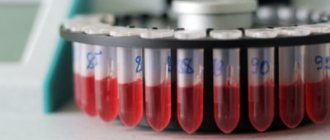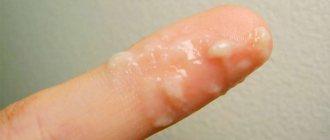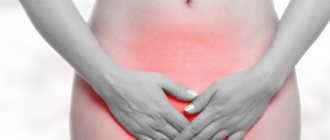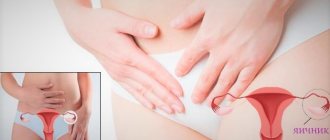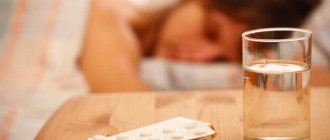Low blood pressure accompanies the lives of modern people. Patients simply do not pay attention to its symptoms, but take the unpleasant sensations for granted. Hypotension occurs more often in women than in men and does not always require treatment. To understand whether you need treatment, be sure to consult a doctor, and do not attribute apathy and constant fatigue to the costs of the profession or overwork.
Briefly about low blood pressure
Arterial hypotension is a condition in which the blood pressure level decreases below the established norm. If men are diagnosed with blood pressure less than 100/60 mm Hg. Art., and in women 95/60 mm Hg. Art., then a thorough diagnosis is carried out to determine the cause of the pathological process. Based on the data received, the doctor will make a diagnosis. This may be hypotension or other disorders in the body that caused such a deviation.
For some people, low blood pressure is normal and they feel great with it. This condition is called physiological hypotension - it does not require drug treatment. Reduced blood pressure can be observed by athletes after training or people who start living in the mountains. Over time, the condition will normalize and the person will feel great. In any other cases, you should consult a doctor for advice.
Important! Elderly people develop atherosclerotic hypotension, which appears due to decreased vascular tone and atherosclerosis.
Diagnostics
To make an accurate diagnosis and establish the cause of low blood pressure, the doctor will need to carry out a whole range of diagnostic measures.
Primary diagnosis performed by a cardiologist is aimed at:
- studying the medical history of the patient and his relatives. This is necessary to confirm/exclude the influence of genetic predisposition on the development of hypotension,
- patient interview. It helps the doctor create a symptomatic picture of the patient, determine the severity of the disease, establish the pathological root cause of hypotension,
- physical examination (three-time measurement of blood tone during which an interval of 5 minutes is maintained, daily blood pressure monitoring, listening to the patient using a phonendoscope).
A special role in the study is given to instrumental diagnostics:
- Dopplerography of blood vessels,
- Ultrasound of the heart, abdominal cavity,
- EchoCG,
- cardiointervalography,
- electroencephalography,
- ECG (at rest, with load).
Laboratory research methods are used:
- blood biochemistry,
- general clinical blood test,
- general urine analysis,
- orthostatic test.
If all the diagnostic methods used did not allow the cardiologist to accurately determine the factor predisposing to the disease, the patient will need research by highly specialized doctors:
- ophthalmologist,
- pediatrician,
- obstetrician-gynecologist,
- neurologist,
- gastroenterologist,
- endocrinologist.
Main causes in children and adults
Blood pressure regulates many processes in the cardiovascular system. Taking this feature into account, doctors identify a number of root causes that provoke the disorder. Blood pressure indicators are influenced by external factors and diseases of internal organs. As a rule, the disease can be triggered by the following factors:
- stressful situations, emotional experiences;
- vegetative-vascular dystonia, blood loss;
- dehydration, intoxication;
- serious injuries;
- vitamin deficiency, debilitating diets;
- side effects after taking medications;
- excessive physical activity;
- change in weather conditions;
- stomach ulcer, heart disease;
- disruption of the nervous system caused by diabetes;
- infectious diseases, benign or malignant neoplasms;
- problems with the spinal column.
All of the above reasons interfere with the proper functioning of blood vessels. Once blood pressure drops, it dramatically reduces the blood pressure on the walls of the blood vessels. Such a violation leads to a rapid heartbeat, the entire circulatory system narrows, and the pressure gradually begins to drop.
Obviously, there are a lot of reasons for the development of hypotension, so they all need to be properly eliminated. In order not to harm your health, you need to see a doctor and undergo an examination. Based on the data obtained, the specialist will select the correct treatment regimen.
Hypotension - causes
There are many factors that provoke the development of this condition. Neurocirculatory hypotension is an independent disease. It is diagnosed in 80% of cases. It is caused by the following reasons:
- stress;
- brain injuries;
- ionizing radiation;
- harmful working conditions (excessive noise, vibration, high temperature);
- chronic fatigue.
Secondary hypotension is a condition accompanied by a decrease in blood pressure, which is a clinical sign or complication of a disease. Such transient arterial hypotension is provoked by the following factors:
- deficiency of iodine-containing thyroid hormones;
- arrhythmia;
- anemia;
- cervical osteochondrosis;
- myocarditis;
- diabetic neuropathy;
- hypothyroidism;
- stomach ulcer;
- neoplasms;
- taking certain medications (painkillers and antidepressants);
- bleeding;
- dehydration;
- acute poisoning;
- infectious diseases.
Acute arterial hypotension
This disorder is characterized by a rapid drop in pressure. This condition is considered very dangerous, since a decrease in blood flow negatively affects all organs, and especially the brain. A sharp drop in blood pressure can be caused by the following factors:
- dehydration of the body;
- poisoning (chemical or food);
- blood poisoning;
- infections operating in the body.
Chronic arterial hypotension
This condition is characterized by a prolonged decrease in blood pressure. This drop in blood pressure is normal for residents of high mountains and athletes. In other cases, this is an abnormal condition. It is characterized by a loss of strength, which makes doing basic work feel like an impossible task. This phenomenon poses the greatest danger to older people.
Symptoms of low blood pressure
Depending on the severity of hypotension and additional diseases, the disease is accompanied by unpleasant symptoms. A person may simply not notice some of them, attributing them to ordinary fatigue, while other signs clearly demonstrate themselves. As a rule, the pathological process has the following clinical manifestations:
- increased nervousness and irritability;
- drowsiness and feeling of powerlessness, emotional disorders;
- sensitivity to changes in weather conditions;
- in the morning you feel lethargic and unfocused;
- memory impairment and absent-mindedness, increased sweating;
- shortness of breath even with light exertion, heart rate increases;
- cold extremities despite warm weather;
- dull and aching pain in the frontal or temporal part of the head;
- pale skin;
- nausea, tendency to rapid motion sickness;
- dizziness, which can lead to fainting.
A person may experience only a few symptoms of hypotension. However, even they will not allow you to lead your usual lifestyle.
Important! If the pressure level drops once, then there is no need to worry. But if clinical signs of hypotension appear regularly, this should be a serious reason to consult a doctor.
Symptoms and first signs
The main sign of hypotension is general weakness. It manifests itself as drowsiness, malaise, dizziness, nausea, and a state of apathy. Hypotonics are characterized by:
- anxiety;
- irritability;
- constant fatigue;
- shortness of breath with minimal exertion.
When pressure drops, patients often experience cold sweat, hand tremors, pale skin, and numbness in their fingers. With chronic hypotension, there is a deterioration in appetite, headache, confusion, memory loss, and blurred vision.
Causes and treatment during pregnancy
During the period of bearing a child, serious changes occur in a woman’s body, which also affect the level of blood pressure. Hypotension in early pregnancy is normal, so there is no need to worry. However, if the pressure level drops below the set level and the condition begins to gradually worsen, then this is an alarm bell.
Blood pressure is one of the main indicators of the condition of the expectant mother, so a lot of attention is paid to it. Its indicators are measured at every appointment in the antenatal clinic; it is also important to regularly monitor blood pressure yourself.
For the normal well-being of the woman and the fetus, the pressure should not fall below 100/60 mmHg. Art. If it turns out to be lower, then the woman will definitely feel the following symptoms:
- fatigue, despite proper rest;
- loss of ability to work;
- decreased memory and attention;
- dyspnea;
- tinnitus;
- increased heart rate;
- dizziness;
- sensitivity to weather changes;
- Even fainting is possible.
Important! The main cause of hypotension during pregnancy is hormonal changes.
Sometimes low blood pressure can indicate a woman’s chronic diseases. For example, these could be diseases of the digestive tract, allergies, thyroid or adrenal dysfunction.
Low blood pressure not only makes the mother feel unwell, but also poses a serious danger to the development of the fetus. Due to this disorder, the child does not receive enough oxygen. If you do not take any action, this can lead to a serious illness - gestosis. The disease entails serious disruptions in the functioning of a woman’s organs and systems, and can also lead to the death of the baby.
9 ways to improve your overall health
Hypotension entails unpleasant symptoms that worsen the woman’s general condition. Treatment during pregnancy differs from usual therapy, since many drugs are prohibited. However, there are effective methods to help eliminate poor health:
- It is forbidden to get out of bed suddenly - after waking up it is important to stay in bed for about 10 minutes;
- It is necessary to have a small snack before a full breakfast;
- do simple physical activity (running, swimming, dancing);
- cold and hot shower;
- increase the daily amount of salt to 9 g;
- eat broths based on dietary meat;
- use celery root - it can be added everywhere;
- for vigor, you can drink a cup of chicory in the morning;
- If you feel unwell, you should lie on your back and raise your legs up.
Unfortunately, these methods may not always be effective. If your blood pressure drops regularly and you feel unwell, your doctor may recommend taking approved medications. Typically, the treatment regimen includes sedatives (tincture of motherwort or valerian), biogenic stimulants (Eleutherococcus), drugs containing caffeine and drugs that stimulate blood circulation in the uterine placenta.
Pathogenesis
From a biophysiological point of view, hypotension develops in cases where:
- the stroke and cardiac output decreases;
- peripheral resistance of the vascular bed decreases;
- the volume of circulating blood decreases;
- the return of venous blood to the heart decreases.
These hemodynamic changes can occur either alone or in combination with other influencing factors.
Chronic hypotension is most often characterized by functional changes in the higher autonomic centers of vascular regulation. Sometimes the function of the renin-angiotensin system is insufficient, which also affects the regulation of blood pressure. Additionally, the sensitivity of vascular receptors to neurotransmitters is impaired, and a deficiency of corticosteroids and aldosterone may occur.
Hypotension can be orthostatic, and then its occurrence is associated with a violation of the baroreflex at different levels of nerve impulse transmission. In particular, the afferent part of the nerve fibers, through which the impulse is transmitted to the brain, and the efferent part, the signal is transmitted from the brain to tissues or organs, can be affected.
Hypotension most often acts as a symptom that manifests itself in various diseases.
In diagnosis, hypotension is important, since the corrective system of medical measures depends on the degree of reduction in blood pressure.
Complications
Hypotension, like any other disease, requires quality treatment. If therapy is not started in a timely manner, the disease will progress and lead to serious consequences. As a rule, the disease can provoke the following complications:
- gestosis during pregnancy;
- arrhythmia;
- ischemic heart disease;
- stagnation of plasma in blood vessels.
Important! Hypotension and heart attack are two incompatible diseases. Modern studies have proven that hypotensive people are not afraid of the most common heart diseases, such as heart attack and stroke.
Why is low blood pressure dangerous?
With hypotension, the heart muscle and brain are in a state of chronic hypoxia, i.e. oxygen starvation, which affects the functional state.
The most dangerous consequence is stroke and heart attack. People with hypotension often faint and may be injured if they fall. During pregnancy, low blood pressure can cause placental abruption, intrauterine bleeding, malformations and even fetal death.
Drug treatment
Hypotension is quite treatable. To normalize blood pressure, the doctor recommends an effective treatment regimen. It includes drugs from different groups:
- natural adaptogens (tincture of motherwort, ginseng, lemongrass, valerian);
- adrenomimetics (Caffetin, Ephedrine, Phenylephrine);
- cerebroprotectors (Actovegin, Cinnarizine, Vinpocetine);
- nootropic drugs (Glycine, Piracetam);
- vitamins;
- antidepressants.
Important! All medications should be prescribed only by a doctor. The specialist takes into account the individual characteristics of the patient and the nature of the disease. The doctor pays special attention to the dosage that best suits the patient.
Forecast
With hypotension, the prognosis will depend on several factors. That is, depending on the type of disease, causes, concomitant pathology and age of the patient.
The prognosis is favorable with timely treatment of concomitant diseases. On the contrary, the prognosis is unfavorable if appropriate measures are not taken.
If secondary hypotension develops, the prognosis will depend on the underlying disease. In acute hypotension, it is important to provide the necessary assistance.
In the chronic course of the disease, the prognosis is worse than in the acute course. If, of course, when acute symptoms develop, the necessary help is provided!
go to top
Treatment with folk remedies
Effective traditional medicine recipes always help with hypotension. At the appointment, the doctor may recommend to the patient herbs that tone blood vessels and improve the patient’s general condition. Treatment at home can be carried out with the following plants:
- echinacea;
- Rhodiola rosea;
- ginseng;
- Eleutherococcus;
- Chinese lemongrass.
Based on these herbs, you can prepare decoctions according to the usual scheme. For 1 tbsp. l. dry raw materials you need 250 ml of boiling water. The mixture is infused for an hour, then filtered.
Important! Before use, it is important to read the instructions and pay special attention to contraindications.
Prevention
The best prevention of hypotension is proper nutrition. Introduce foods rich in vitamins and microelements into your daily diet. Give preference to fresh vegetables and fruits, lean meats and fish, and whole grain cereals. Avoid fast food, smoked meats, marinades, spices and animal fats. These products clog blood vessels, irritate the intestines and cause liver disease.
In order for your body to work properly, it needs to provide a full flow of energy, and, as you know, we get it with food. The condition of your blood vessels and the body’s resistance to various diseases, including hypotension, directly depend on what you eat daily.
A healthy lifestyle is the key to good health
Hypotension, if it is not provoked by diseases of internal organs and systems, can be easily eliminated with the right lifestyle. To do this, a person should follow simple recommendations:
- adhere to the correct daily routine;
- get a good night's sleep;
- balanced diet filled with vitamins;
- drink your daily amount of water;
- to walk outside;
- play sports (swimming, morning exercises, running, dancing);
- cold and hot shower;
- maintain a good mood and not worry.
The above tips must be followed by all people to normalize blood pressure. However, for hypotensive patients, these recommendations are especially valuable, since they can completely replace treatment and quickly restore health.
First aid for exacerbation
If you faint, you need to elevate the victim's legs.
A hypotensive crisis is often accompanied by a strong drop in blood pressure to the point of fainting. In this condition, first aid can save a person’s life. The patient needs to be laid down and his legs raised, the top button unbuttoned, the collar or tie loosened, fresh air provided, and the face lightly wetted with cold water. You can bring a person to his senses by rubbing his earlobes, lightly patting his cheeks, or you should let him smell ammonia. If a hypotensive person is in a semi-fainting state, you need to talk to him and ask him to breathe deeply.
Even after the person has regained consciousness, it is necessary to call an ambulance and notify relatives, since an attack of hypotension may be accompanied by repeated fainting.
Clinical manifestations
Doctors believe that the tendency to hypotension develops from childhood. Such a child is lethargic, apathetic compared to his peers, does not participate in active games, preferring to sit quietly on the sidelines. An adult hypotensive person has an asthenic physique - thin, with narrow shoulders, and tall. Muscle hypotonia is noted. This is the appearance of a patient whose condition is due to a hereditary factor. If low blood pressure develops against the background of somatic pathology, then the patient may have any external signs.
Symptoms of low blood pressure in women are:
- Headache. Cephalgia is localized in the region of the parietal and occipital bones. Taking non-steroidal anti-inflammatory drugs has no effect. Painful sensations are also poorly relieved by the use of analgesic drugs.
- Darkening in the eyes. Occurs when there is a sudden change in the position of the body in space, or jerky movements. A combination of classical (organic) and orthostatic hypotension is possible.
- Dizziness. They are intense. A complete loss of spatial orientation is possible, which is caused by acute ischemia of the cerebellar structures.
- The occurrence of tinnitus. Hearing may be impaired until it is temporarily lost.
- Syncope. Fainting is a common sign of hypotension.
- Visual impairment. These include phytopsia, metamorphopsia, glare in the eyes, and transient blindness.
- The appearance of nausea not associated with food.
- The occurrence of vomiting. It can be repeated and does not bring relief to the person.
- Pale skin.
- Blueness (cyanosis) of the nasolabial triangle.
- Hyperhidrosis. There is an increase in sweating, which is especially noticeable at night.
- Shortness of breath, suffocation. They appear not only during physical activity, but also at rest.
- Decreased libido.
Attention! Chronic hypotension may be accompanied by cognitive impairment and menstrual function.
Drugs for arterial hypotension
A number of medications are used to treat this pathological condition. First of all, adaptogens of plant origin are prescribed, which gently stimulate the central nervous system. Among them are Tincture of Schisandra chinensis, Ginseng, Zamanikha, Eleutherococcus senticosus. All of them excite the central nervous system, stimulate the S.S.S., help in eliminating mental and physical fatigue, increased drowsiness, thereby increasing blood pressure. The dosage of these medications is carried out at the rate of one drop of the drug per year of life, morning and evening, before meals.
Indications for prescribing nootropic drugs and GABAergic substances for arterial hypotension may be existing cerebral insufficiency, immaturity of brain structures based on the results of an electroencephalogram, as well as memory loss. Nootropic drugs directly activate brain mechanisms, help to be resistant to various aggressive influences, and improve cortico-subcortical connections.
In this case, Piracetam is prescribed, which is very similar in chemical structure to Gamma-aminobutyric acid. It has a positive effect on the processes of metabolism and blood supply to the brain, while stimulating oxidative and reduction processes, enhancing glucose utilization, and improving blood flow in ischemic parts of the brain. The energy potential of the body increases as a result of accelerated ATP turnover and increased activity of adenylate cyclase. Piracetam helps improve the integrative functioning of the brain, helps strengthen memory, and also facilitates learning processes.
Gamma-aminobutyric acid is prescribed to activate energy processes, increase the respiratory activity of the brain, improve thinking, memory, weaken vestibular disorders, while providing a mild stimulating effect on the psyche. A positive effect is achieved in the presence of endogenous depression, where astheno-hypochondriacal phenomena predominate.
The use of aminophenylbutyric acid helps relieve tension, anxiety, fear, and having a tranquilizer effect, the drug improves sleep processes. As a rule, this medicine is used for severe arterial hypotension against the background of neurotic manifestations.
Pyritinol, used for the treatment of low blood pressure, activates metabolic processes in the central nervous system, and in the case of excessive formation of lactic acid, reduces it, and also helps the brain to be resistant to hypoxia. This drug is mainly used to treat minor depression, asthenic conditions, migraines, and neurosis-like disorders. However, it excites the human psyche and motor skills, disrupts sleep, provokes irritability and is contraindicated for seizures.
To enhance metabolic processes, Cerebrolysin is prescribed, which has a neuroprotective effect, prevents the destruction of neurons during hypoxia, has a positive effect on changes in cognitive function, improving attention, memorization, information reproduction, mood, and mental work.
Drugs for the treatment of arterial hypotension also include anticholinergics and biogenic stimulants. In the first option, it is Bellataminal, which reduces the excitation of the central nervous system and in the periphery, as well as Bellaspon with similar pharmacological actions. Biogenic stimulants include Aloe in combination with Thiamine.
Alpha adrenergic agonists are prescribed for the treatment of orthostatic disorders and fainting conditions. Among them, Midodrine is widely used, which has a direct sympathomimetic effect. This drug increases vascular tone, blood pressure and prevents stagnation of blood in the veins against the background of orthostatic disorders. This is what keeps blood volume and blood pressure at the same level, increases the delivery of oxygen to tissues and organs, thereby eliminating morning weakness, constant drowsiness and dizziness. Midodrine does not affect the functioning of the heart in general, but can reflexively reduce heart rate. In addition, it does not excite the nervous system.
Indications for prescribing tranquilizers for arterial hypotension are severe symptoms of neurotic origin, emotional tension, hypochondria, fear, anxiety. The greatest preference is given to Tofisopam and Triosazin. In the first case, the drug has an anxiolytic effect without pronounced sedative muscle relaxant and anticonvulsant effects. Tofisopam regulates the psycho-vegetative system and moderately stimulates it. Trioxazine is prescribed in the presence of neurotic disorders, where hyposthenic manifestations predominate.
Also, for the treatment of arterial hypotension, drugs are prescribed that improve the hemodynamics of the brain and its microcirculation. This is Vincamine, which improves blood circulation in the vessels of the brain, increases blood flow and utilizes oxygen in the brain, reduces and stabilizes vascular resistance, while increasing performance and improving memory.
Causes of a sharp increase in blood pressure in a hypotensive patient
Enter your pressure
130
on
90
Search in progress Not found
Most often, pressure surges occur as a result of age-related changes, deterioration of the heart condition and decreased elasticity of blood vessels. In hypotensive women, the first cases of high blood pressure may occur with the onset of menopause.
Hypotonic women should pay attention to the level of hormones in the blood during sudden surges in blood pressure. They can cause an increase in blood pressure. In some cases, the cause of a sharp increase in blood pressure is diseases of the internal organs:
In some cases, the cause of a sharp increase in blood pressure is diseases of the internal organs:
The cause of a jump in blood pressure can be physical or nervous overload (including night shift work). Finally, certain medications or alcohol can trigger similar episodes.
The danger is that it is much more difficult for a hypotensive person’s body to adapt to new working conditions. Due to low vascular tone, even a pressure of 130/90, which is normal for many people, can provoke a hypertensive crisis or stroke. Therefore, the reason for concern is not specific blood pressure indicators, but the deterioration of the patient’s well-being.
To unambiguously determine the reasons for the increase in numbers on the tonometer, it is necessary to conduct a comprehensive examination, including:
- detailed blood test;
- conducting an ECG;
- scanning the state of the blood vessels of the brain.
Video: “Causes of increased pressure and what to do if there is a sharp rise”
Lifespan
Hypotonic disease can affect life expectancy. At the same time, life expectancy increases if appropriate treatment is carried out. Concomitant diseases were also eliminated.
Life expectancy is sharply reduced if treatment is delayed and the disease has already entered the chronic stage. Hypotonic disease can develop into hypertension. Then the process is protracted.
Hypotonic disease affects quality of life. Only lifestyle correction will help cope with the disease. As well as the use of complex treatment methods!
Exodus
The outcome of hypotension will depend on both age and the type of hypotension. Acute hypotension with treatment often ends favorably. That is, perhaps the onset of recovery.
Chronic hypotension can continue throughout life. Therefore, the outcome of chronic hypotension can be disastrous.
If hypotension is associated with brain damage, the outcome may be poor. Brain hypoxia may develop. And this will lead to a deadly end.
Primary hypotension can be treated. Lifestyle correction is necessary. Correct rest and work schedule.
go to top
Treatment of hypotension at home, medications
Why is the problem of treating hypotension difficult? The fact is that in nature, energy does not appear out of nowhere - any open system, without the supply of energy from the outside, tends to lower its level to equilibrium with the environment. Therefore, it is much easier to lower the pressure than to increase it, because nature strives for absolute peace. As a last resort, you can use an old and time-tested method: bloodletting. As a result, the blood volume will decrease, and the pressure will simply have nowhere to come from.
As for the treatment of hypotension, it is necessary to strengthen the work of the heart, and for a long time. Medicine has long known about such drugs, but all of them either have many side effects, can accumulate in the body (like cardiac glycosides), or lead to addiction and severe attacks of fatigue after the end of use (amphetamines).
Specialists - cardiologists - either do not treat arterial hypotension or are reluctant to do so. The fact is that with hypotension there is no such high risk of sudden death and the development of complications - heart attack and stroke, as with hypertension. Therefore, all medical forces are thrown into the fight against this “enemy.” Unhappy hypotensive patients are often left to take measures on their own, so hypotension is mainly treated at home.
How to do without medications
First, let's name non-medicinal methods that will help you get what is so lacking in hypotension: vigor and activity.
- First of all, you need to get a good night's sleep. If you are drowsy during the day and have poor sleep at night, then all attempts to awaken activity are doomed to failure.
- You definitely need to do a set of morning exercises. There should be no weights, but for 10 minutes you need to start at a slow pace and gradually increase the speed and amplitude of the exercises (with your own body, ball, gymnastic stick). Ideally, after gymnastics, warmth spreads throughout the body, it becomes covered with light sweat, and sleep recedes.
- This is followed by hygiene procedures, which are best completed with a contrast shower: alternating warm and cold water. This allows you to perform gymnastics for the skin vessels and make them work. The effect of the shower should be enhanced by rubbing the body with a shaggy towel.
- Then you can start breakfast. It should not be heavy and high in calories. A hypotensive person who eats a portion of pork cutlets with fried eggs for breakfast risks falling back into a drowsy state. Therefore, an excellent option would be low-fat sweet cottage cheese with berries, and hot green or black tea with ginger. This will give warmth and cheerfulness.
A small cup of black coffee or coffee with cream is also not forbidden. It is advisable that all procedures are carried out in person - you need to grind the coffee and brew it.
The only caveat is that you should never accompany your morning coffee with a cigarette.
In general, with hypotension, smoking is very harmful, since it disrupts the already poor vascular tone, and the short-term positive effect of a cigarette is explained by vascular spasm. Over time, cigarettes will not help, just like alcohol, and will only worsen the headache.
Medicines
What drugs can be prescribed for treatment of hypotension? You should not take drugs that directly increase blood pressure - this will not lead to anything good. Drugs such as pressor amines (norepinephrine, adrenaline), dopamine, mesatone are used in intensive care to maintain pressure and “pull” a person out of shock.
In the treatment of chronic hypotension, vitamins, mineral complexes and drugs called adaptogens are used. Let's list some of them:
- general strengthening herbal complex balms;
- ginseng tincture;
- tincture of Rhodiola rosea (golden root);
- lemongrass
If you use these drugs in the morning, you can achieve performance that will last most of the day. In addition, you can help the body by adding L-carnitine, succinic and folic acid, and vitamin C to your diet.
A good help in the fight against hypotension will be methods of active rest, which provide a gradual, rather than “explosive” increase in load. These methods include cycling (and especially cycling) and swimming.
A little about the bath
Does a bath help with hypotension or not? A good bath procedure removes toxins from the body, makes the blood vessels of the skin work, and after a properly performed bath there must be a sound sleep. This happens because intensively steamed skin deposits blood, which drains from the internal organs and the brain.
This causes pleasant warmth, relaxation and drowsiness. Therefore, a proper, no-frills evening bath can give a morning boost of energy and allow hypotensive patients to joyfully greet the new day.
Forecast
We looked at some of the causes and treatment of hypotension - it should be said in conclusion that hypotensive people are, in general, happy people. They fall out of the cohort of those patients who are at risk of a heart attack or stroke. No, this does not mean at all that neither the first nor the second will ever happen to them.
Remember, the biggest risk factors for stroke are older age and male gender. These factors cannot be modified in any way. But everything that relates to additional, modifiable risk factors is avoided by hypotensive patients.
As a rule, they are not overweight, their cholesterol is also close to normal, and therefore their risk of developing it is the same as that of a healthy person. It is available, but the risk is significantly lower. But, if we talk about average life expectancy, there is no data that would indicate that low blood pressure leads to a shorter life expectancy. In contrast, such data are available for hypertension.
- Therefore, patients with hypotension, if they want to help their body, can live a long and fulfilling life.
Tags: heart
- Causes of bloating, treatment of gas formation in…
- Bags under the eyes: how to remove them at home? -...
- Chronic sinusitis - symptoms and treatment in adults...
- Heel spur - photos, symptoms, treatment at home
- Migraine - symptoms and treatment of attacks at home...
- Sciatica - symptoms and pain, treatment at home...
Symptoms that require you to see a doctor
In addition to the manifestations already mentioned, attention should be paid to the following points:
- Facial distortion. Impaired controllability of facial muscles. Often accompanies a stroke.
- Syncope more than once a day. In other words, fainting.
- Persistent arrhythmia such as tachycardia (pulse more than 80 beats per minute) or bradycardia (less than 60 beats per minute). Both scenarios are unfavorable in terms of prognosis if they are not corrected. A similar sign of low blood pressure in a woman ends in cardiogenic shock, thromboembolism, cardiac arrest, the development of tissue ischemia, chronic organ diseases, etc.
- Loss of vision, even short-term. Indicates stenosis of the retinal arteries. Possible ruptures of blood supply structures, hemophthalmos, secondary detachment and complete loss of function.
- Impaired motor activity of half the body. Manifestation of stroke.
- Inability to speak normally (slow, drawn out diction).
- Chest pain of a pressing nature. They radiate (give) to the stomach, back and arms. They don't allow you to breathe normally.
Any of the above symptoms requires calling an ambulance for initial measures and possible transportation to a cardiology hospital.
Etiology of the disease
The brain has a regulatory center that controls fluctuations in blood pressure. It functions like this: baroreceptors (nerve endings located in the walls of arteries) react to a decrease in pressure, sending a signal to the central nervous system. Nerve fibers transmit impulses to the endocrine system. A portion of adrenaline is released into the bloodstream, and the blood vessels narrow, raising blood pressure to normal.
The body reacts with a persistent decrease in vascular tone to a number of pathological factors:
- Neurocirculatory dystonia (80% of cases);
- Brain tumor (not necessarily malignant), when the regulatory center itself is affected;
- Shock of various nature - cardiogenic, septic, painful;
- Massive blood loss, including hidden, or severe dehydration (with burns, profuse diarrhea, frequent vomiting);
- Acute heart failure;
- Myocarditis, arrhythmia, cardiomyopathy;
- Chronic psycho-emotional stress, in which the compensatory mechanisms of the central nervous system are depleted;
- Chronic nasopharyngeal infections;
- Pancreatitis, hepatitis, cirrhosis of various etiologies;
- Diabetes mellitus, B12 deficiency anemia, hypothyroidism;
- Neuroses, depression, psychological trauma;
- Constant lack of sleep, chronic fatigue, excessive physical and mental stress;
- Chronic alcoholism;
- Poisoning;
- Strict diets;
- Overdose of blood pressure medications, side effects of medications;
- Prolonged bed rest.
Intracranial hypotension with persistent headaches can have two main causes: traumatic brain injury or osteochondrosis in the cervical spine. Other possible causes include chronic birth and obstetric injuries, rotational subluxation of the cervical vertebra, unsuccessful somersaults over the head, and a careless sharp turn of the neck.
Hypotension in pregnant women
A persistent decrease in blood pressure during pregnancy develops against the background of a double load experienced by the systems and organs of the expectant mother. Hypotension is caused by additional blood circulation to the fetus and vasospasm caused by a hormonal surge.
As a rule, hypertension appears towards the end of the first trimester and is either asymptomatic or accompanied by fatigue, irritability, loss of appetite, and sometimes heart pain and nausea.
